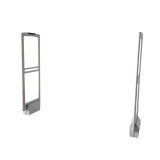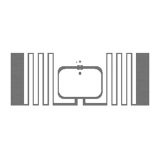Are you in the business of wholesale and looking for the right supplier for RFID labels? Look no further! RFID labels play a crucial role in inventory management and tracking. They are used in various industries such as retail, healthcare, logistics, and manufacturing, among others. Choosing the right supplier for your wholesale needs is essential to ensure the quality, reliability, and cost-effectiveness of your RFID labels. In this article, we will guide you through the process of selecting the right RFID label supplier and highlight the key factors to consider. So, let’s dive in and find the perfect RFID label supplier that suits your wholesale requirements!
Why RFID labels matter

Before we delve into the factors to consider when choosing an RFID label supplier, let’s talk about why RFID labels are so important.
- Efficient inventory management: RFID labels allow for quick and accurate scanning of items, making inventory management more efficient and reducing the likelihood of errors.
- Improved tracking and traceability: RFID labels enable real-time tracking of products throughout the supply chain. This improves traceability and helps minimize the risk of lost or misplaced items.
- Enhanced security: RFID labels can be equipped with security features to prevent theft or unauthorized access to sensitive items. This is especially important in industries where the integrity of the supply chain is critical.
- Streamlined operations: By automating data collection and reducing manual processes, RFID labels help streamline operations and increase productivity.
Now that we understand the importance of RFID labels, let’s move on to the key factors to consider when choosing a supplier.
Factors to consider when choosing an RFID label supplier

When selecting an RFID label supplier for your wholesale needs, several key factors should be taken into consideration. Let’s explore these factors in detail:
Quality and reliability
- Look for a supplier that offers high-quality RFID labels that meet international standards.
- Ensure that the supplier has a reputation for providing reliable and durable products.
- Consider the supplier’s track record and customer reviews to gauge their performance.
Customization options
- Check if the supplier offers customized RFID labels that can be tailored to your specific requirements.
- Evaluate their capabilities in terms of label design, printing technologies, and data encoding options.
- Discuss any special features or functionalities you may need, such as tamper-evident labels or on-metal tags.
Compatibility
- Determine if the RFID labels offered by the supplier are compatible with your existing RFID hardware and software systems.
- Ensure that the supplier provides detailed specifications and technical support to facilitate seamless integration.
Scalability
- Consider your future growth plans and assess if the supplier can accommodate your increasing demand for RFID labels.
- Discuss volume discounts, lead times, and the supplier’s ability to meet large-scale orders.
Pricing and cost efficiency
- Compare the pricing structures of different RFID label suppliers.
- Look for suppliers who offer competitive prices without compromising on quality.
- Consider the total cost of ownership, including any additional services or support provided by the supplier.
Types of RFID Labels

Now that we have discussed the significance of RFID labels and the factors to consider when choosing a supplier, let’s explore the different types of RFID labels available in the market:
- Passive RFID labels: Passive RFID labels do not have their power source and rely on the energy emitted by the RFID reader to communicate. They are cost-effective and widely used in applications such as inventory tracking, supply chain management, and access control. Passive RFID labels are suitable for use as RFID clothing tags in environments with a short reading range.
- Active RFID labels: Unlike passive RFID labels, active RFID labels have their own power source, typically in the form of a battery. This allows them to transmit data over long distances and in challenging environments. Active RFID labels are commonly used in applications that require real-time location tracking, such as vehicle tracking and asset management.
- UHF RFID labels: UHF (Ultra-High Frequency) labels operate at a frequency range of 860-960 MHz, making them suitable for applications that require long reading distances and high data transfer rates. They are commonly used as an RFID security tag for various items in inventory management, retail, and supply chain operations.
- NFC RFID labels: NFC (Near Field Communication) labels operate at a frequency of 13.56 MHz and are primarily used for short-range communication. They are commonly found in applications that require contactless payment, access control, and mobile device interactions, such as mobile ticketing and electronic door locks.
- Customized RFID labels: Some suppliers offer customized RFID labels tailored to specific business needs. These labels can be designed with unique dimensions, materials, and printing options to meet specific requirements. Customized RFID labels are an excellent option for businesses with unique operational needs or branding considerations.
Conclusion
Selecting the right RFID label supplier for your wholesale needs is crucial for ensuring the quality, reliability, and cost-effectiveness of your RFID labels. Consider factors such as quality, experience, customization options, scalability, pricing, technical support, and compliance when making your decision. By taking these factors into account, you can find a supplier that meets your requirements and helps you optimize your inventory management and tracking processes.
FAQs
1. What is the RFID sticker?
An RFID sticker is a type of label or tag that contains an RFID (Radio-Frequency Identification) chip and antenna. These stickers are designed to be attached to items or surfaces for the purpose of tracking and identifying them using RFID technology. RFID stickers come in various shapes and sizes, and they can be passive (not requiring a power source) or active (having a built-in power source like a battery). They are commonly used in inventory management, asset tracking, supply chain logistics, retail, and various other applications where real-time data capture and item identification are essential.
2. Where is the RFID tag used?
RFID tags find utility in a diverse range of industries and applications. They play a pivotal role in inventory management, ensuring precise tracking and efficient stock control in retail and warehouses. In supply chain and logistics, RFID enhances visibility and streamlines the movement of goods. Retailers benefit from RFID for faster checkouts, reduced shrinkage, and improved customer experiences. Access control systems utilize RFID for secure entry into restricted areas. In healthcare, RFID tags assist in patient identification, asset tracking, and inventory management.
Smart packaging solutions use RFID for real-time monitoring of product conditions. Authentication and anti-counterfeiting measures are supported by RFID technology. From libraries to agriculture, waste management to race timing, and manufacturing to laundry, RFID is an enabling technology that optimizes processes and enhances visibility in an array of applications.
3. How are RFID labels printed?
RFID labels are printed by encoding the RFID chip with unique data, followed by label printing using methods like digital or thermal transfer printing. Once printed, labels are attached to items and undergo quality checks and testing to ensure proper function with RFID readers. The labels are then integrated into their intended applications, such as inventory management or access control.
4. How do I identify an RFID sticker?
To identify an RFID sticker, visually inspect it for distinctive design features, symbols like “RFID” or “NFC,” and any embedded RFID components. If needed, use an RFID reader to confirm its RFID functionality, as RFID stickers are used for various applications, each with its specific technology and purpose.


































